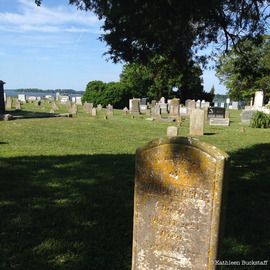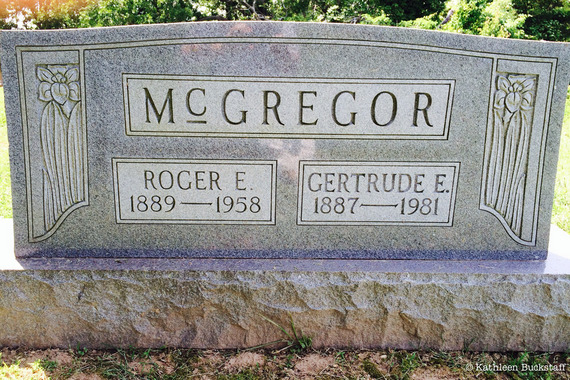As fate would have it, my husband and I spent the better part of three days watching a youth sporting event from a cemetery on a hill. The cemetery was created in the early 1600s. Initially, the parents walked around the gravesite to the lookout point. We skirted the edges carrying folding chairs and sack lunches. Eventually, the ease of the direct route prevailed, and we all gave in to the convenience of a straight line and traipsed across Margaret and Mortimer, among others.
Of course, the cemetery jokes were flying: "People were sure dying to get in here," (a childhood favorite of mine).
"Things seem kind of dead today," one dad quipped.
"AH!" my husband yelled. All within earshot jumped. "The ground is soft!" Sure enough, we looked and his footprint was visible in the mound on top of a gravesite. We read the tombstone: the death year was listed as 2014. Everyone gave that gravesite room when walking in the future. Something about a recent burial insisted on respect -- the life was fresh as was the pain of the loss.
Graves from the early 1800s invited curiosity. We marveled that those people hadn't known electricity, cars, planes, penicillin, or the Internet. There were gravesites that listed birthdates in the late 1800s with lifetimes that spanned World War I and World War II. There were a few who had died during or shortly after World War II.
Most of the words on the tombstones from the 1600s had worn away. We laughed that one should have paid extra to have letters carved more deeply in the stone. On many later tombstones, epitaphs were inscribed:
"A devoted mother, wife and friend."
"Light dawns for the righteous and joy for the upright in heart."
"The ones we love are never gone, they live within our hearts."
"A life of unselfish devotion."
"The morning cometh."
"With God All Things Are Possible."
"Light and Love: as above so below."
And then I saw a poem carved on a flat stone placed on top of grave:
"If Tears
Could Build
A Stairway And Memoires
Were a Lane, I Would
Walk Right Up To Heaven
And Bring You
Back Again."
I stopped there on the hillside and marveled at humans, at who we are: capable of war and love, memories and longing, life and loss. Over a hundred years ago, someone died and someone cried, and there I was standing on a hillside witnessing the pain and the beauty of love.
As I walked around the cemetery, I saw one statement of love after the next. I saw women who were buried 30 years after their husbands, but eventually, lay beside them.
I saw children who were buried before their parents, but ultimately, the families rested together. On almost every tombstone, there was a dash between the birth year and the death year. I decided the dash was the relevant part on the stone, not so much the day we are born, or the day we die, but what happens in the middle.
"It's the dash that counts," I said to my husband and took his hand. I held his hand, because I could. It seemed a simple gesture, but one I'm certain many of those bodies resting under our feet would die to do.
Kathleen Buckstaff is the author of two books that celebrate motherhood:Mother Advice To Take With You To College, a collection of hilarious drawings and wise sayings, and The Tiffany Box: A Memoir, an International Best Book Awards Finalist, a story spoken from the heart--in a voice that is personable and honest, with wisdom and wit to share.



